The Wrack
The Wrack is the Wells Reserve blog, our collective logbook on the web.
The Wrack is the Wells Reserve blog, our collective logbook on the web.
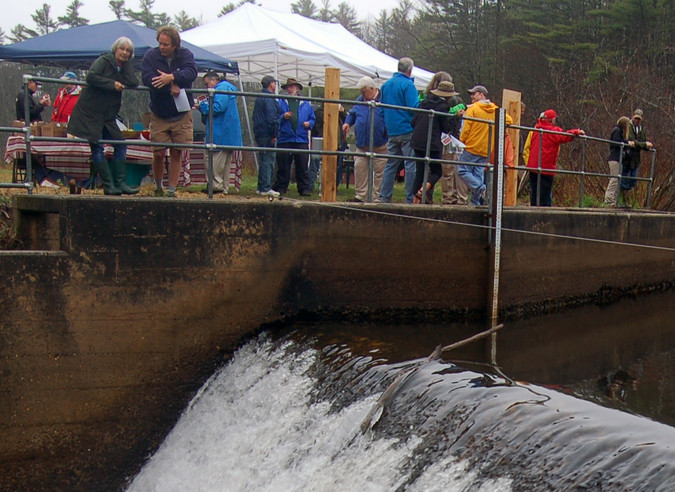 Earlier this month, about 30 people assembled behind an isolated and nondescript brick building along U.S. Route 1 at the boundary of Wells and Kennebunk during one of the wettest mornings of our rather soggy spring.
Earlier this month, about 30 people assembled behind an isolated and nondescript brick building along U.S. Route 1 at the boundary of Wells and Kennebunk during one of the wettest mornings of our rather soggy spring.
Everyone was good natured about the rain. After all, we were standing alongside an important water supply that had recently been improved for fish. We huddled under popup tents in foul-weather gear to celebrate the reconstruction of the Branch Brook fish ladder, a piscine highway past the water district's dam.
Numerous people had a hand in planning and reconstructing the ladder, but a few were singled out for germinating the project:
The people who spoke through the downpour captured the story of how and why the fish ladder became functional after years of neglect and how they will measure the project's success. Here are some notes, quotes, and photos from the day…
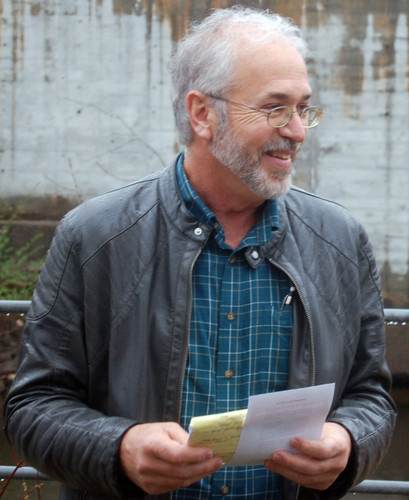 In 1895, the Mousam Water Company was created to serve the Kennebunk area. In 1921, the water district was formed. The district currently serves 30,000 to 100,000 customers (depending on the season) in seven communities — Kennebunk, Kennebunkport, Wells, Arundel, Ogunquit, and parts of Biddeford and York.
In 1895, the Mousam Water Company was created to serve the Kennebunk area. In 1921, the water district was formed. The district currently serves 30,000 to 100,000 customers (depending on the season) in seven communities — Kennebunk, Kennebunkport, Wells, Arundel, Ogunquit, and parts of Biddeford and York.
The fish ladder was built in 1955 and functioned "on and off — mostly off" over ensuing decades.
When approached about repairing the fish ladder, the district had "a touch of apprehension," but after a year of talking through issues, finding common ground, and coming to an understanding about how the relationship would work, the district became comfortable moving the project forward. Today, the collaboration and its results provide "a fine example of cooperation between two nonprofit organizations with very different and potentially conflicting missions... [with] a final product better than what either of us could have done alone."
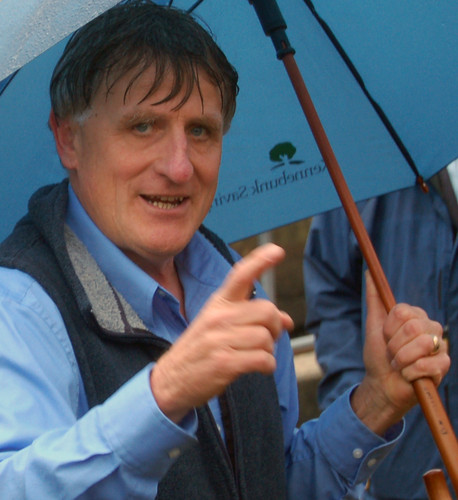 "Rivers often serve as a dividing line between communities, but though rivers divide us politically, they really are uniters. Branch Brook embodies that feeling of unity."
"Rivers often serve as a dividing line between communities, but though rivers divide us politically, they really are uniters. Branch Brook embodies that feeling of unity."
The river and its surrounding land provide drinking water for several communities, protect habitats for wildlife, create recreational opportunities, and are aesthetically pleasing to people. As a coastal waterway, Branch Brook also unites the estuary with freshwater tributaries.
For several decades the dysfunctional fish ladder was an obstacle, but by working together with the water district it now should be better than ever.
"At the reserve, we're about fish. The district is about water. But they care about fish. And we drink water." That's why this project got done.
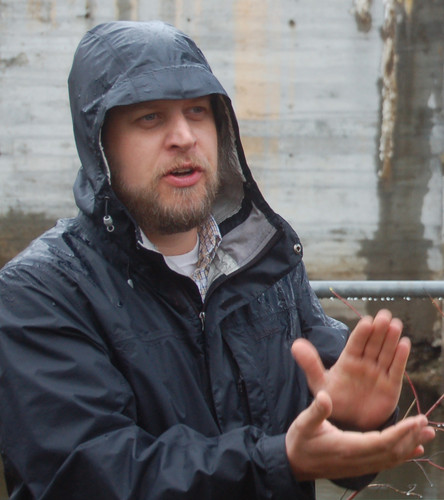 "It's really advantageous for fish to spend time in estuaries. They're very productive habitats with a lot more food over a larger area. Fish can grow faster and bigger by going to the estuary.
"It's really advantageous for fish to spend time in estuaries. They're very productive habitats with a lot more food over a larger area. Fish can grow faster and bigger by going to the estuary.
"[Past research director Michele Dionne] said if we could restore fish passage in Branch Brook, we could consider ourselves as having done something really good for fish in this area. I think she would have been extremely pleased to have seen this accomplished."
John Burrows helped immensely by making connections, providing guidance, and sharing his fish passage expertise freely.
"With our limited budget and our desire to see this move forward really quickly, we decided to go with a design that would modify the fishway without making changes to the concrete structure."
There's been a lot of progress in fish ladder design since this one was originally built. In this project, existing structures were upgraded and proven designs were modified to make the ladder effective for five fish species of special interest.
"We knew that river herring can swim up and over a rapid, but they can't jump, so we designed the ladder for them knowing the other species would be fine."
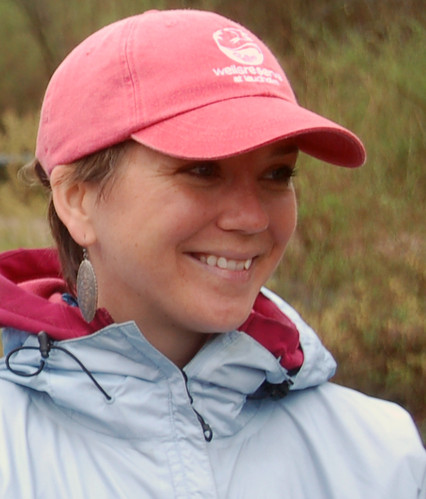 Now that the fish ladder is operational, will fish actually use it? Research staff will study fish movements in the brook intensively over the summer and in coming years.
Now that the fish ladder is operational, will fish actually use it? Research staff will study fish movements in the brook intensively over the summer and in coming years.
A fish trap installed at the top of the ladder will determine what species use it and how many make it up past the weirs. But it's important to know what fish don't use it or get part way and go back.
This will mean catching and marking a lot of fish both up- and downstream of the ladder. One principal technique will be inserting passive integrated transponders into captured fish. "Think of these PIT tags as an EZPass for fish. When a tagged fish passes by a receiver mounted at bottom or the top of the fish ladder, its unique code will be recorded."
Brook trout and sea lamprey will be the main focus over the summer. A collaboration with Bates College will also help determine, through fin clips, whether the brook trout captured are just using fresh water or running into the estuary.
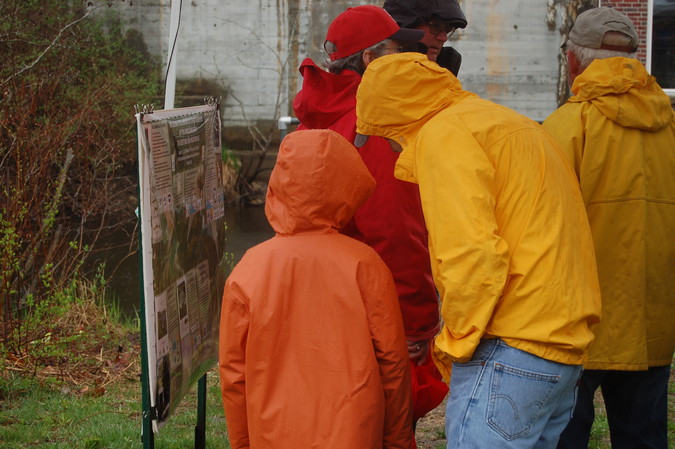
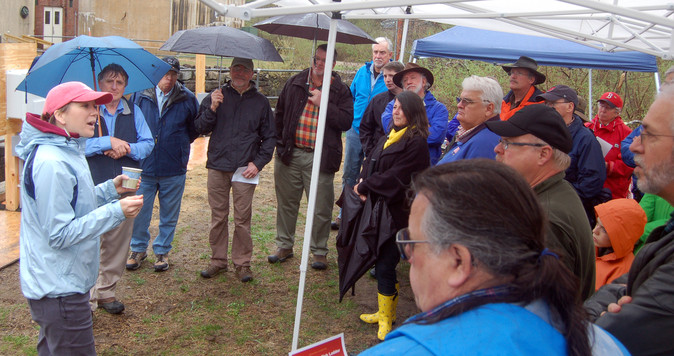
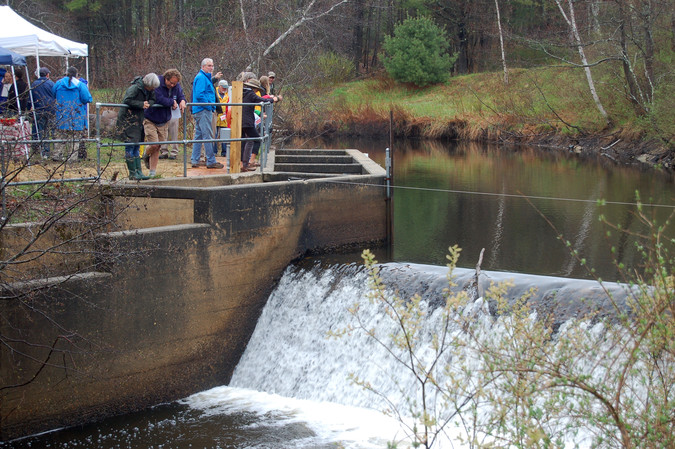
Download the Dedication and Celebration Program (200kB)